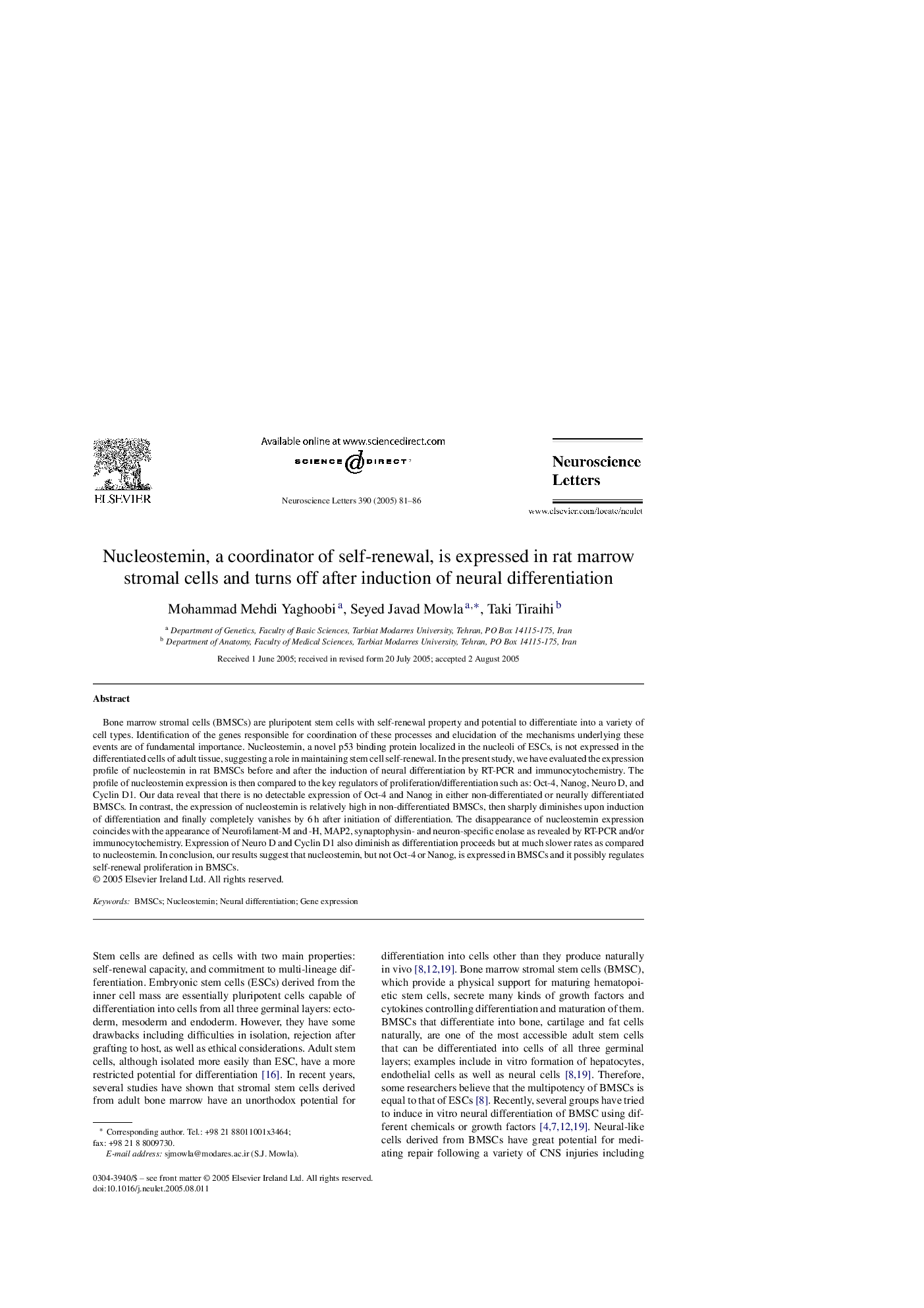| Article ID | Journal | Published Year | Pages | File Type |
|---|---|---|---|---|
| 9428889 | Neuroscience Letters | 2005 | 6 Pages |
Abstract
Bone marrow stromal cells (BMSCs) are pluripotent stem cells with self-renewal property and potential to differentiate into a variety of cell types. Identification of the genes responsible for coordination of these processes and elucidation of the mechanisms underlying these events are of fundamental importance. Nucleostemin, a novel p53 binding protein localized in the nucleoli of ESCs, is not expressed in the differentiated cells of adult tissue, suggesting a role in maintaining stem cell self-renewal. In the present study, we have evaluated the expression profile of nucleostemin in rat BMSCs before and after the induction of neural differentiation by RT-PCR and immunocytochemistry. The profile of nucleostemin expression is then compared to the key regulators of proliferation/differentiation such as: Oct-4, Nanog, Neuro D, and Cyclin D1. Our data reveal that there is no detectable expression of Oct-4 and Nanog in either non-differentiated or neurally differentiated BMSCs. In contrast, the expression of nucleostemin is relatively high in non-differentiated BMSCs, then sharply diminishes upon induction of differentiation and finally completely vanishes by 6Â h after initiation of differentiation. The disappearance of nucleostemin expression coincides with the appearance of Neurofilament-M and -H, MAP2, synaptophysin- and neuron-specific enolase as revealed by RT-PCR and/or immunocytochemistry. Expression of Neuro D and Cyclin D1 also diminish as differentiation proceeds but at much slower rates as compared to nucleostemin. In conclusion, our results suggest that nucleostemin, but not Oct-4 or Nanog, is expressed in BMSCs and it possibly regulates self-renewal proliferation in BMSCs.
Related Topics
Life Sciences
Neuroscience
Neuroscience (General)
Authors
Mohammad Mehdi Yaghoobi, Seyed Javad Mowla, Taki Tiraihi,
